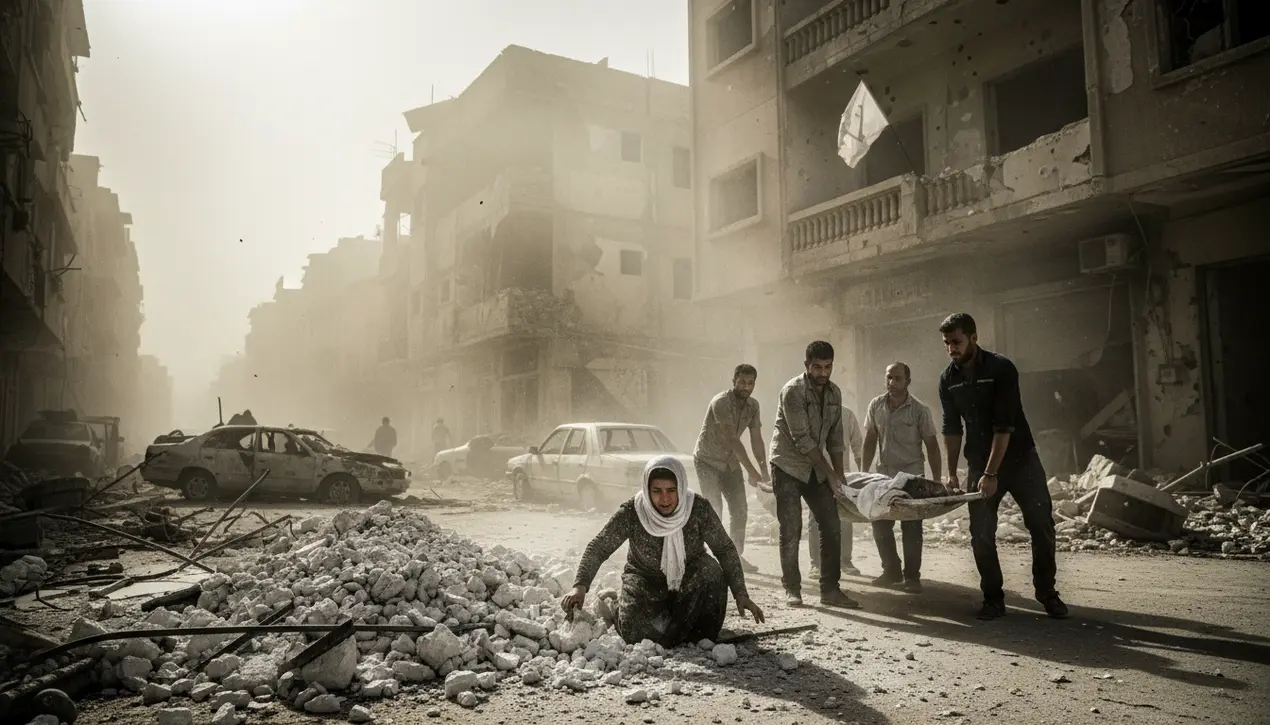
Politicsconflict & defenseMilitary Operations
Israeli Strikes Kill 25 Palestinians in Gaza, Says Health Ministry.
OL
Oliver Scott
2 days ago7 min read6 comments
The fragile architecture of the five-week-old ceasefire in Gaza collapsed with devastating speed today, as Israeli strikes killed at least twenty-five Palestinians, according to the Gaza Health Ministry. This immediate, kinetic response, triggered by what the Israeli military described as Hamas gunmen firing on its soldiers, represents more than a mere violation of a temporary truce; it is a critical inflection point that recalibrates the entire risk matrix for the region.The initial Israeli statement, framing the action as a targeted engagement against Hamas infrastructure, must be analyzed not in isolation but within the broader strategic calculus. We are witnessing a classic escalation ladder in action: a localized breach of the ceasefire terms has been met with a disproportionate, high-casualty response, a move clearly designed to re-establish deterrence but one that inherently carries the significant tail risk of a full-scale resumption of hostilities.The casualty figures, while stark, are merely the leading indicator; the secondary and tertiary effects will ripple through diplomatic channels in Doha and Cairo, where mediators are now scrambling to contain the fallout. From a political risk perspective, the probability of a rapid return to the status quo ante has plummeted.The Israeli government, facing immense internal pressure, has demonstrated a low threshold for retaliatory action, signaling a potentially more aggressive posture for the foreseeable future. Conversely, Hamas and other militant factions will now face their own internal pressures to respond, creating a vicious cycle of action and reprisal that is notoriously difficult to break.The market for regional stability, already bearish, is now pricing in a high likelihood of prolonged conflict, with implications for energy security, global diplomatic alignments, and the ever-present threat of a multi-front engagement. This event is not an anomaly; it is a stress test of the ceasefire's underlying foundations, which were always provisional.The immediate scenario planning now must account for a range of outcomes, from a hurriedly patched-over truce that remains perpetually on life support to a rapid, uncontrolled descent back into the intense urban warfare that characterized the previous months. The key variable to watch is not just the next rocket launch or airstrike, but the political maneuvering in war cabinets and the public statements from key power brokers, which will provide the clearest signals of whether this is a managed, tactical escalation or the first domino in a cascade toward a much wider and more destructive war.
#featured
#Israeli strikes
#Gaza
#ceasefire violation
#Hamas targets
#Palestinian casualties
Stay Informed. Act Smarter.
Get weekly highlights, major headlines, and expert insights — then put your knowledge to work in our live prediction markets.
Comments
Loading comments...
© 2025 Outpoll Service LTD. All rights reserved.